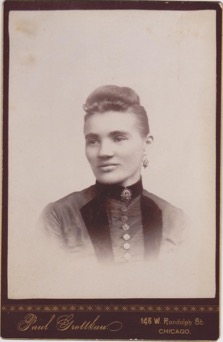 [When, several years ago, my friend and colleague Colleen Thornton introduced me to the research she had begun based on a photograph she purchased on eBay, I offered her as much space as she needed at the blog for publication of her results.
[When, several years ago, my friend and colleague Colleen Thornton introduced me to the research she had begun based on a photograph she purchased on eBay, I offered her as much space as she needed at the blog for publication of her results.
Continuing below, the outcome of Thornton’s painstaking inquiry introduces to the medium’s history two extraordinary figures: a German-born 19th-century U.S.-based anarcho-socialist photographer, Paul Grottkau, and his subject, the African-American anarcho-socialist Lucy Parsons, widow of one of the men railroaded to public hanging in the prosecution of the suspects of the Chicago Haymarket Riot. In the cabinet portrait that Thornton discovered the destinies of these two notable left-wing figures intersect, as her essay makes clear.
Thornton offers a self-contained, persuasive, and compelling analysis, a prime example of what close attention to individual photographs can reveal. This is a first-rate work of scholarship, and a significant addition to the literature. It marks the blog’s first (but perhaps not last) publication of a fully resolved piece of research.
Thornton’s article as written comes in two parts, complete with extensive footnotes. To optimize the online reading experience, I have converted the notes to links whenever possible. I will publish each part in installments — Part II this week and next. Click here for the previous installment of Part II. Click here for an index page with links to all installments in this series. — A.D.C.]
•
Paul Grottkau, Anarchist Photographer, Part II:
The Sitter, Lucy Parsons (continued)
by Colleen Thornton
•
The Grand Deception of Lucy and Albert Parsons
… Throughout her life, Lucy Parsons forcefully rejected any insinuation of African ancestry, proclaiming descent from a maternal Mexican lineage and a Native American (Creek) paternal lineage.[1] In 1886, while Albert Parsons stood trial, they both vehemently denied newspaper reports — first published on September 15, 1886 in the St. Louis Globe-Democrat and subsequently carried nationally by multiple newspapers — that she was a mixed-race woman and the common-law wife of a formerly enslaved man in Waco, Texas who had fathered her first-born child while she was still a teenager (the baby did not survive early childhood), and from whom she fled to be with a white man, Albert R. Parsons.[2]
A former Confederate soldier, Albert Parsons returned home to Waco, Texas after the Civil War, adopted radical ideas about racial and class equality, began a career in the printing business and deeply involved himself in local Republican politics.
Thanks to the exhaustive research conducted by acclaimed historian Jacqueline Jones, and published in her book Goddess of Anarchy: The Life and Times of Lucy Parsons, American Radical (2017), we now know that Lucy Parsons was born into slavery in 1851 in Virginia, the child of an enslaved African American woman and likely fathered by the slave owner. She was born nowhere near Waco, Texas as she and Albert disingenuously insisted.
Lucy, her mother, and brother were brought to Texas from Virginia during the Civil War by this slave owner in a futile attempt to evade their emancipation. When freedom finally arrived, Lucy, then a bright, beautiful teenager, fully embraced her new-found agency.
People of mixed heritage were not unusual in Texas, and multi-ethnic communities existed in the Southwest before and after the Civil War. When the young Lucy fell in love with Albert Parsons, marriage between white and non-white people was not yet explicitly illegal in Texas, but would become so very shortly after they wed in 1871. Consequently, their interracial marriage placed them in extreme danger. To make matters even worse, Albert Parsons had founded a newspaper that enthusiastically supported the federal government’s policies of Reconstruction.[3]
In response to Reconstruction, the Ku Klux Klan rose up to become a dominant force in Texas, gaining power with unspeakable terror and homicidal violence against all newly freed people and their supporters. As life in Waco became increasingly perilous, the couple decided to move north to Chicago, Illinois, in 1873. Albert had briefly visited the city on a business trip and had been impressed by its economic opportunities and political potential.
•
Chicago’s burgeoning immigrant community, including thousands of political refugees from Prussia, had transformed that city into the epicenter of radical political agitation. After the Great Fire of 1871 engulfed the metropolis, annihilating its core and leaving 100,000 people homeless, the desperate plight of the population provided fertile ground for the seeds of Marxism, anarchism and socialism.
The Parsons couple quickly settled into Chicago’s German-immigrant community. They found work and started a family, raising a son and daughter. Together their political activism flourished in collaboration with a host of German-American counterparts, including August Spies and Paul Grottkau. Extraordinarily articulate and brave, the couple soon became outspoken crusaders within the nascent anarchist labor movement, fiercely advocating for the rights of the impoverished working class and challenging the established order of 19th-century capitalism.
In October 1884, Albert Parsons founded The Alarm, an English-language weekly anarchist publication, which he edited and wrote for through May 1886.[4] Lucy worked closely with Albert on running the paper, and was a regular contributor. Owned by the International Arbeiter Association, The Alarm shared office space with the Arbeiter-Zeitung, the Chicago-based German-language workers’ newspaper that had been edited by Paul Grottkau until September 1884, when he was replaced by his nemesis, August Spies.[5]
•
Although The Alarm had a limited circulation of no more than two thousand copies, it secured for Lucy Parsons a reputation for inflammatory rhetoric and florid prose. During this period, the couple’s political agitation escalated and Lucy emerged from behind her husband’s dominant public figure. Albert was a long-winded but captivating orator who could hold forth for hours with detailed recitations of facts and statistics in support of his polemics. Lucy, on the other hand, delivered passionate diatribes riddled with vivid analogies and violent attestations that exhilarated her followers.
Her signature essay, “To Tramps,” published on the front page of the first issue of The Alarm, was a clarion call for the underclasses to fight oppression by any means necessary: “… avail yourselves of those little methods of warfare which Science has placed in the hands of the poor man, and you will become a power in this or any other land. Learn the use of explosives!”[6]
That Lucy Parsons was not “white” was apparent to both the audiences she addressed and the mass media that routinely reported on her activities. The published observations of her physical attributes referred to her skin color in euphemistic terms such as “dusky,” “mulatto” and “quadroon,” or bluntly as “negro” and “negress,” adjectives and nouns all used to sully her reputation and undermine her credibility at a time when African origin discredited an individual’s intelligence in the minds of many.
Journalists objectified her, often salaciously, by describing her feminine comeliness and style, charismatic presence, and well-modulated speaking voice. Fascination with the unique array of her attractive attributes did not assuage blatantly racist demonization of her person or the condemnation of her anarchist beliefs and labor organizing efforts. But on occasion her exotic appearance and fearless actions resulted in journalists’ admiration, as in an account of her speech in Orange, New Jersey on Sunday, October 24th, 1886, titled “The Woman Anarchist – Mrs. Lucy Parsons, wife of one of the sentenced seven. What she looks like and what she says – her Mexican ancestors – Her dream of the dawn of a new day. Her plucky battle at Orange.”[7]
The special correspondent responsible for this article, Homer C. Wixon, reporting from New York City, recounted the details of the day’s events and his gave his impressions of the soon-to-be widow:
“She is colored, but not with the blood of Africa. Her ancestors were Mexican, native born. ‘It has been charged,’ she said, ‘that Anarchists are all foreigners. My ancestors were here before the Europeans. They went forth to meet Cortes when he landed on the Pacific slope.'”[8]
Insidious, almost unconscious racism surfaces in Wixon’s report of her background. The writer waxes romantic about her “color” being a sign of native North American heritage, rather than proof of “the blood of Africa” running through her veins, a fatal liability. This yarn-spinning seeks favor in the newspaper readers’ minds, catering to their prejudices and misconceptions, while enthusiastically supporting Lucy’s denial of her own blackness.
He goes on to describe his subject thus:
“She is about 35 years old, is firmly built and has dark, copper features. Her eyes are dark, soft and slow rolling and are set wide apart. Her forehead is low and her face broad. Her nose is flat or negro type. Her whole face has a strong suggestion of Aztec blood. With her heavy earrings, topaz buttons and shining silk gown she has an air of old Egypt about her. Her wavy hair is brushed back and knotted in becoming style on the top of her head. She wears black silk and velvet on the platform, and speaks with a grace and force that held the auditors’ closest attention to the end.”
The reporter further states that
“She is an exceedingly good, even a wonderfully impressive speaker. … She dreams of the dawning of the day when power will be decentralized, when supply will only be enough to meet the demand; when the farmer will supply only so much of the products of the land; the shoemaker so many shoes; the hatter so many hats, and so on; when the land will be in common; when there will be no rent, no interest and no profit, therefore no Jay Goulds, no Vanderbilts, no corporations and no moneyed power. This she regards as the only evolutionary stage of anarchism — the revolutionary to be reached when the great middle classes are practically extinct.”[9]
On this occasion, according to Wixon, the owner of the hall tried to stop Mrs. Parsons from speaking, first by locking the doors, then by calling the marshal. With a valid rental contract in hand, she prevailed. “Then Mrs. Parsons mounted a bench in the corner of the hall, and as she stood there, with burning eyes and blazing cheeks, the most fear laden of her auditors admitted that she was handsome.” The “plucky little petticoated Anarchist” won over the crowd with her presence of mind, professional conduct, moving words, and transcendent beauty.[10]
•
Dealing with 19th-Century Racial Profiling
In her 2011 paper “Confounding Identity: Exploring the Life and Discourse of Lucy E. Parsons,” historian Michelle Diane Wright states that “superficial visual characteristics such as skin color, facial features and hair texture” were the basic means of racial identification to justify cultural, political, and economic hegemony of white people over all non-white peoples.[11] Wright further opines that
“The notion of being deemed Black by default would not have been foreign to Parsons, but would not have conformed to the way she most likely viewed herself. It is probable that her lifelong efforts to confound mainstream America’s dichotomous ethnic labels were seemingly a political attempt to expand the boundaries of these parochial designations. By challenging these common misconceptions, Lucy Parsons was to have a profound and paradigm-shifting influence upon the radical leftist movements of her time.”[12]
•
Coming as it does after the Parsons’s adamant denials of the racially charged newspaper exposé about Lucy’s real identity published in 1886, and in the wake of the tragic railroading and execution of Albert in November 1887, the portrait photo of Lucy taken by Paul Grottkau soon afterwards could well have been an effort to wrest control of the public narrative from the mainstream media and gain the advantage for an effective counter-narrative in support of the alternative background story concocted by Lucy and Albert. It would have been logical to attempt to undermine the prejudicial and condescending descriptions of Lucy that were continuously disseminated by the enemies of anarchism, socialism, and organized labor.
Dealing with the thorny issue what we now call “racial profiling” in the late 19th century in a particularly visual way would have been an inspired tactic and a natural outgrowth of the photographer’s and the sitter’s long-standing political alliance. Visual evidence to support Lucy’s version of her heritage could have been very helpful in publicizing the British lecture tour that she was about to embark upon in the fall of 1888. Such a deliberate move would have been particularly canny as she stepped upon the international stage to defend her husband’s innocence as a martyred hero of the American anarchist movement.
![Cabinet card photographic portrait of a "mixed-race" lady, taken sometime in 1888 - 1889, by "Paul Grottkau, 148 W. Randolph St. Chicago." [Collection of the author]](https://www.nearbycafe.com/artandphoto/photocritic/wp-content/uploads/2020/05/Paul_Grottkau_Lucy_Parsons_cabinet_card_lg.jpg)
Cabinet card photographic portrait of a “mixed-race” lady, taken sometime in 1888-1889, by “Paul Grottkau, 148 W. Randolph St. Chicago.” [Collection of the author]
•
In the safety of Grottkau’s West Randolph Street studio, Lucy could have reclaimed and directed her public image with strategic intent. A key factor in the dismissal of her radical political agenda was the ubiquitous newspaper illustrations that pictured Lucy as black or mulatto. In Grottkau’s photo, her sleek coiffure tamed the curly mane of hair seen in the earlier photos. The sympathetic facial expression and appropriately subdued attire of a widowed matron, accentuated by the photographer’s judicious lighting and surface retouching, created a masterful rejoinder. This expertly crafted photograph by a fellow anarchist could easily have been a concerted effort to deflect and/or contradict the intentional maliciousness associated with previously published images of the famous female anarchist.
And yet, more than a decade later, in an interview published on August 12, 1900 in Chicago’s Sunday Inter Ocean newspaper titled “Lucy Parsons is Mild; Home Life of the Anarchist Queen is Quiet and Uneventful,” Lucy responded thus to the reporter’s question “And are you an octoroon?” (The term “octoroon” refers to a person of one-eighth African ancestry). She answered, “Oh no. There is not a drop of Caucasian blood in my veins. My father was a Creek Indian and my mother was a Mexican.” The reporter followed up with, “Then you are part Spanish,” to which she replied, “No again. My mother was just Mexican, not Spanish at all.”
But this journalist did not buy into her oft-repeated story and instead categorically refuted it, writing that
“Her features are not Indian. Her face is brown, oval and well shaped, although her ears show the marks of what Max Nordau[13] would catalogue as degeneracy. Her eyes are long and brown, and her hair is not straight black but kinky. Her hands are characteristically long and large, with pointed fingers. When she talks her rather thick nostrils dilate and her whole face and figure quiver with excitement.”[14]
After so many years of relentlessly trying to shift the public narrative around her ethnicity, by 1900 nothing had really changed; this article was illustrated with a crude cartoon of Lucy being arrested and an unflattering rendering based on August Brauneck’s 1886 portrait photo. …
•
Notes:
[1] Jones, op. cit., pp. 156-60.
[2] Jones, op. cit., pp. 3-28.
[3] Jones, op. cit., pp. 3-28.
[4] See “Anarchists’ Case, August Spies et al v. People of the State of Illinois,” Western Reporter, Vol. X, All Cases Determined in the Courts of the Last Resort, Robert Desty and Charles A. Ray, editors, (Rochester, NY: The Lawyers’ Co-operative Publishing Company, 1887), pp. 739-40, online at https://books.google.com/books?id=lVorAQAAMAAJ&pg=PA5&lpg=PA5&dq=Western+Reporter,+Vol.+X&source=bl&ots=uaItUf- kqa&sig=ACfU3U3hUoeVkILvGG7PRGO0VfWk6B1rrg&hl=en&sa=X&ved=2ahUKEwi3z5bF_L7hAhXwxlkKHRdtDtMQ6AEwAXoECAkQAQ#v=onepa ge&q=Western%20Reporter%2C%20Vol.%20X&f=false.
[5] Carolyn Ashbaugh, Lucy Parsons: American Revolutionary (Chicago: Charles H. Kerr Publishing Company, 1976), p. 54.
[6] Ashbaugh, op. cit., p. 55. Lucy Parsons, “To Tramps,” The Alarm, October 4, 1884, Vol. 1, no. 1, republished online by The Anarchist Library, https://theanarchistlibrary.org/library/lucy-e-parsons-to-tramps.
[7] Bismarck Weekly Tribune, Bismarck, North Dakota, November 12, 1886; (also carried in The Dakodian, November 9, 1886).
[8] Bismarck Weekly Tribune, loc. cit.
[9] Bismarck Weekly Tribune, loc. cit.
[10] Bismarck Weekly Tribune, loc. cit.
[11] “Confounding Identity: Exploring the Life and Discourse of Lucy E. Parsons,” by Michelle Diane Wright, Assistant Professor, Department of History, Community College of Baltimore County, Spring 2011, p. 2, http://works.bepress.com/michelledianewright/1/. This is an unpublished paper delivered at the Berks Conference for Women Historians (2011).
[12] Wright, op. cit., p. 17.
[13] Born Simon Maximilian Südfeld in Hungary in 1849, later adopting the pen name Max Nordau, this Zionist and social critic published in 1892 a two-volume work, Degeneration, attacking what he considered as degenerate art as well as what he saw as the degenerating effects of urbanization on the human body.
[14] The Sunday Inter Ocean, Chicago, Vol. XXIX, no. 141, August 12, 1900, https://img.newspapers.com/image/?clipping_id=9999971&fcfToken=eyJhbGciOiJIUzI1NiIsInR5cCI6IkpXVCJ9.eyJmcmVlLXZpZXctaWQiOjMzODg 2OTYxLCJpYXQiOjE1NTQ2NzUyNDcsImV4cCI6MTU1NDc2MTY0N30.iFpn4GYnvKZrxzsVwQmVDN_7FmB2r_7oRQpBQJZ2Mug.
•
Picture credits:
1. Cover of Goddess of Anarchy, The Life and Times of Lucy Parsons, American Radical by Jacqueline Jones (New York: Basic Books, 2017), derived from photo of Lucy Parsons by August Brauneck, New York, 1886, Prints & Photographs Division, Library of Congress.
2. Albert Parsons, ca. 1880. Photographer unknown.
3. Logo, The Alarm (Chicago), 1885.
4. Logo, The Bismarck Weekly Tribune, 1894.
5. Portrait of Paul Grottkau, Joseph A. Labadie Collection, Hatcher Graduate Library, University of Michigan, Ann Arbor, MI, Filing Code: LPF Grottkau, Paul.1; Accession #: LPF.0410, “Paul Grottkau,” cabinet card, circa 1891-1898, Holler’s Studio, No. 8 Sixth St., First Gallery Below Market St., San Francisco, Cal. (photographer).
6. Photo of Lucy Parsons by Paul Grottkau, Chicago, 1888-89, Collection of the author.
7. Lucy Parsons Article, The Inter Ocean (Chicago), 8-12-1900, p. 33.
8. Lucy Parsons illustration, The Inter Ocean (Chicago), 8-12-1900, p. 33.
•
Click here for an index page with links to all installments in this series.
•
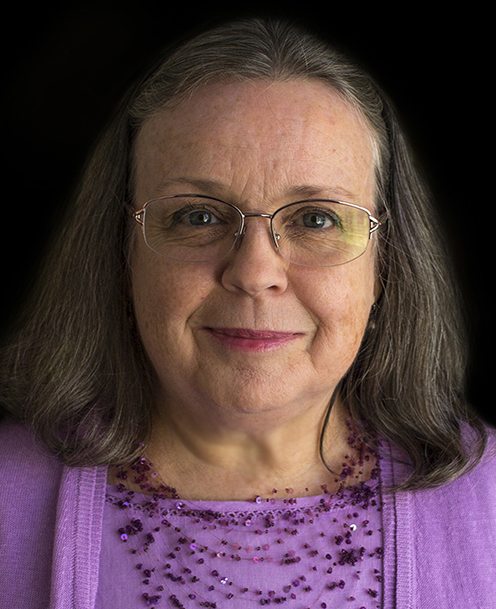 Trained as a painter/printmaker in NYC art schools, Colleen Thornton over the past four decades has focused on fine-art curation and research, arts advocacy, administration and fundraising, and business development. She co-founded and was executive director of City Without Walls Gallery in Newark, NJ. While living in Europe (UK and Denmark) for two decades she worked in the fine arts and architecture on various projects, including fundraising, gallery exhibitions, and international conferences.
Trained as a painter/printmaker in NYC art schools, Colleen Thornton over the past four decades has focused on fine-art curation and research, arts advocacy, administration and fundraising, and business development. She co-founded and was executive director of City Without Walls Gallery in Newark, NJ. While living in Europe (UK and Denmark) for two decades she worked in the fine arts and architecture on various projects, including fundraising, gallery exhibitions, and international conferences.
Thornton has built a substantial collection of 19th- and early 20th-century vernacular photography, Japanese ukiyo-e, and Scandinavian works on paper. As a private dealer, she has added to the collections of several major museums.
With former U.S. Ambassador to Denmark Richard N. Swett, FAIA, Thornton researched and co-authored the book Leadership by Design: Creating an Architecture of Trust (2005). Her writings on cultural topics, including photography, have been published in the U.K., Denmark and the U.S. To contact Colleen Thornton, click here.


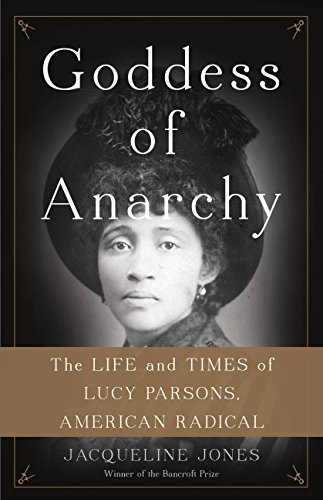
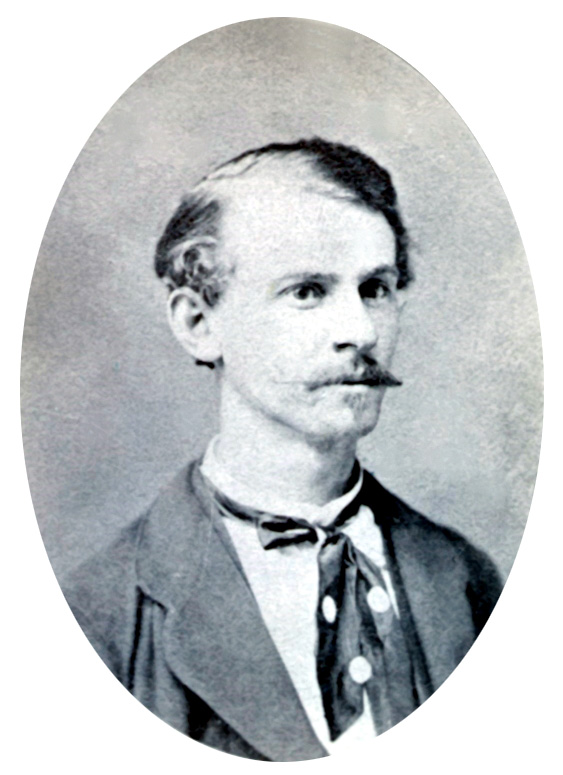


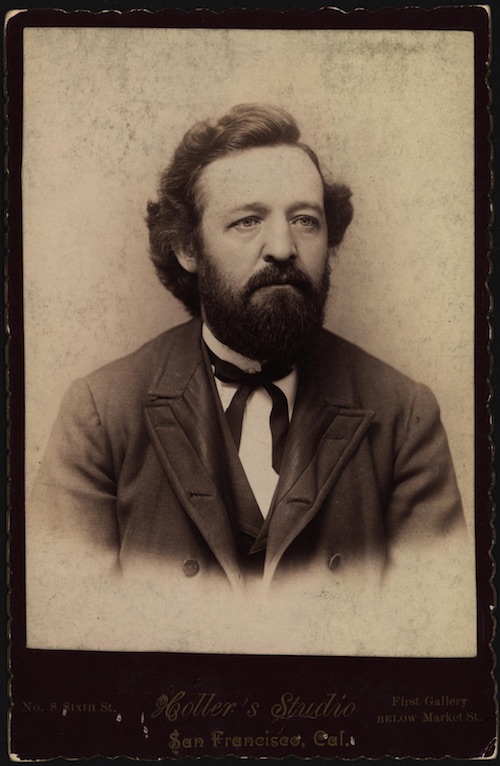
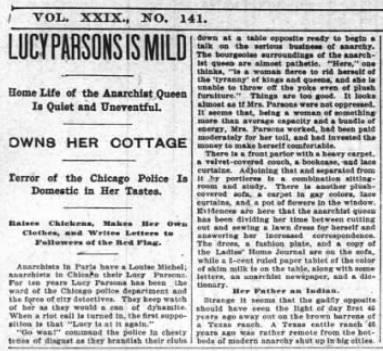
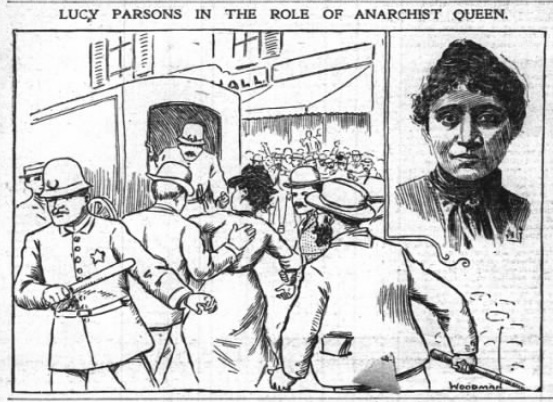




Leave a Comment